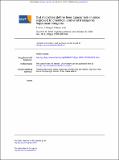| dc.contributor.author | Rogers, Arlin B. | |
| dc.contributor.author | Fry, Rebecca C. | |
| dc.contributor.author | Dedon, Peter C. | |
| dc.contributor.author | Tannenbaum, Steven Robert | |
| dc.contributor.author | Schauer, David B. | |
| dc.contributor.author | Essigmann, John M. | |
| dc.contributor.author | McFaline, Jose Luis | |
| dc.contributor.author | Williams, Michelle V. | |
| dc.contributor.author | Doernte, A. L. | |
| dc.contributor.author | Fiala, Jeannette Louise Allen | |
| dc.contributor.author | Raczynski, Arkadiusz R. | |
| dc.contributor.author | Theve, E. J. | |
| dc.contributor.author | Feng, Yan | |
| dc.contributor.author | Fox, James G. | |
| dc.contributor.author | Lemon, S. M. | |
| dc.contributor.author | Weinman, S. A. | |
| dc.date.accessioned | 2010-03-12T16:11:58Z | |
| dc.date.available | 2010-03-12T16:11:58Z | |
| dc.date.issued | 2009-10 | |
| dc.date.submitted | 2009-08 | |
| dc.identifier.issn | 1468-3288 | |
| dc.identifier.issn | 0017-5749 | |
| dc.identifier.uri | http://hdl.handle.net/1721.1/52536 | |
| dc.description.abstract | Background and aims: Hepatocellular carcinoma (HCC) frequently results from synergism between chemical and infectious liver carcinogens. Worldwide, the highest incidence of HCC is in regions endemic for the foodborne contaminant aflatoxin B1 (AFB1) and hepatitis B virus (HBV) infection. Recently, gut microbes have been implicated in multisystemic diseases including obesity and diabetes. Here, the hypothesis that specific intestinal bacteria promote liver cancer was tested in chemical and viral transgenic mouse models.
Methods: Helicobacter-free C3H/HeN mice were inoculated with AFB1 and/or Helicobacter hepaticus. The incidence, multiplicity and surface area of liver tumours were quantitated at 40 weeks. Molecular pathways involved in tumourigenesis were analysed by microarray, quantitative real-time PCR, liquid chromatography/mass spectrometry, ELISA, western blot and immunohistochemistry. In a separate experiment, C57BL/6 FL-N/35 mice harbouring a full-length hepatitis C virus (HCV) transgene were crossed with C3H/HeN mice and cancer rates compared between offspring with and without H hepaticus.
Results: Intestinal colonisation by H hepaticus was sufficient to promote aflatoxin- and HCV transgene-induced HCC. Neither bacterial translocation to the liver nor induction of hepatitis was necessary. From its preferred niche in the intestinal mucus layer, H hepaticus activated nuclear factor-κB (NF-κB)-regulated networks associated with innate and T helper 1 (Th1)-type adaptive immunity both in the lower bowel and liver. Biomarkers indicative of tumour progression included hepatocyte turnover, Wnt/β-catenin activation and oxidative injury with decreased phagocytic clearance of damaged cells.
Conclusions: Enteric microbiota define HCC risk in mice exposed to carcinogenic chemicals or hepatitis virus transgenes. These results have implications for human liver cancer risk assessment and prevention. | en |
| dc.language.iso | en_US | |
| dc.publisher | British Society of Gastroenterology | en |
| dc.relation.isversionof | http://dx.doi.org/10.1136/gut.2009.183749 | en |
| dc.rights | Article is made available in accordance with the publisher's policy and may be subject to US copyright law. Please refer to the publisher's site for terms of use. | en |
| dc.source | BMJ Publishing Group | en |
| dc.title | Gut microbes define liver cancer risk in mice exposed to chemical and viral transgenic hepatocarcinogens | en |
| dc.type | Article | en |
| dc.identifier.citation | Fox, J G et al. “Gut microbes define liver cancer risk in mice exposed to chemical and viral transgenic hepatocarcinogens.” Gut 59.01 (2010): 88-97. © 2010 BMJ Publishing Group Ltd & British Society of Gastroenterology | en |
| dc.contributor.department | Massachusetts Institute of Technology. Department of Biological Engineering | en_US |
| dc.contributor.department | Massachusetts Institute of Technology. Division of Comparative Medicine | en_US |
| dc.contributor.approver | Fox, James G. | |
| dc.contributor.mitauthor | Rogers, Arlin B. | |
| dc.contributor.mitauthor | Fry, Rebecca C. | |
| dc.contributor.mitauthor | Dedon, Peter C. | |
| dc.contributor.mitauthor | Tannenbaum, Steven Robert | |
| dc.contributor.mitauthor | Schauer, David B. | |
| dc.contributor.mitauthor | Essigmann, John M. | |
| dc.contributor.mitauthor | McFaline, Jose Luis | |
| dc.contributor.mitauthor | Williams, Michelle V. | |
| dc.contributor.mitauthor | DoernteDoernte, A. L. | |
| dc.contributor.mitauthor | Fiala, Jeannette Louise Allen | |
| dc.contributor.mitauthor | Raczynski, Arkadiusz R. | |
| dc.contributor.mitauthor | Theve, E. J. | |
| dc.contributor.mitauthor | Feng, Yan | |
| dc.contributor.mitauthor | Fox, James G. | |
| dc.relation.journal | Gut | en |
| dc.eprint.version | Final published version | en |
| dc.type.uri | http://purl.org/eprint/type/JournalArticle | en |
| eprint.status | http://purl.org/eprint/status/PeerReviewed | en |
| dspace.orderedauthors | Fox, J G; Feng, Y; Theve, E J; Raczynski, A R; Fiala, J L A; Doernte, A L; Williams, M; McFaline, J L; Essigmann, J M; Schauer, D B; Tannenbaum, S R; Dedon, P C; Weinman, S A; Lemon, S M; Fry, R C; Rogers, A B | en |
| dc.identifier.orcid | https://orcid.org/0000-0003-0011-3067 | |
| dc.identifier.orcid | https://orcid.org/0000-0003-4021-1569 | |
| dc.identifier.orcid | https://orcid.org/0000-0002-2196-5691 | |
| dc.identifier.orcid | https://orcid.org/0000-0001-9307-6116 | |
| dspace.mitauthor.error | true | |
| mit.license | PUBLISHER_POLICY | en |
| mit.metadata.status | Complete | |
